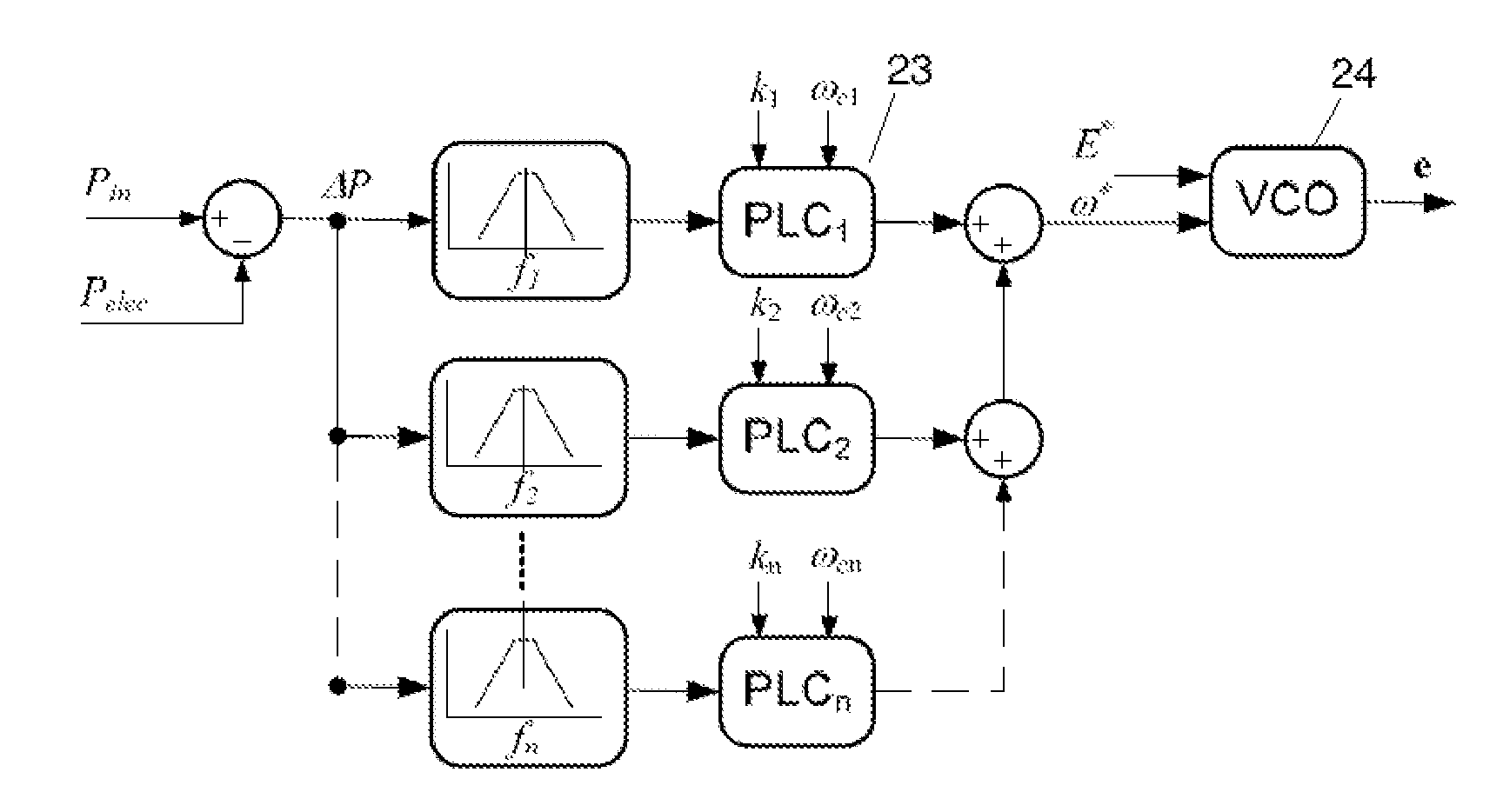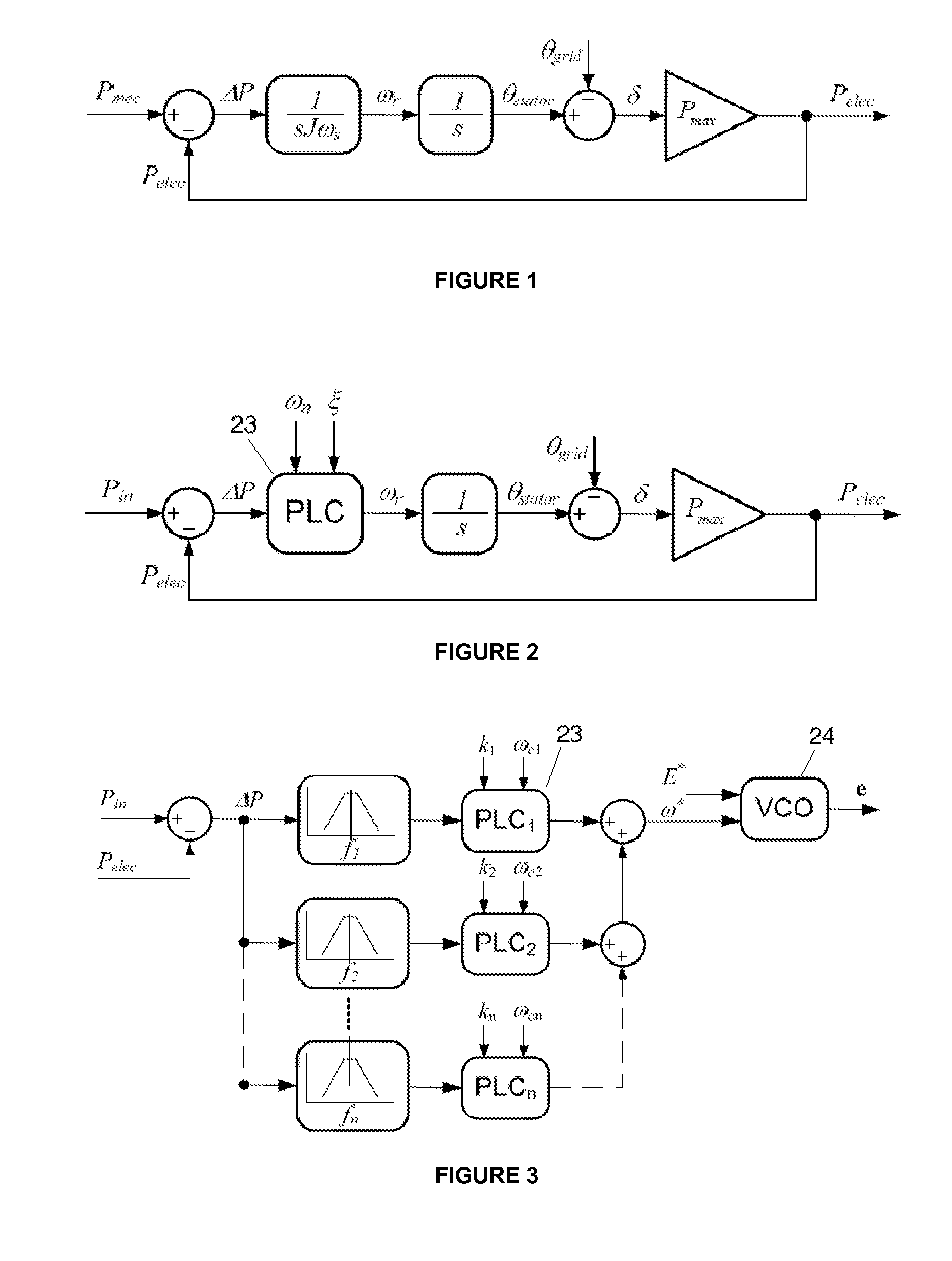Virtual controller of electromechanical characteristics for static power converters
a technology of electromechanical characteristics and static power converters, which is applied in the direction of adaptive control, electric generator control, instruments, etc., can solve the problems of disconnection of the grid, inability of conventional ph inverters to offer an appropriate support to the electric grid, and the failure of the grid of the inverter, so as to reduce the inertia of the power converter, facilitate the connection, and the effect of great flexibility in the behavior of the power converter
- Summary
- Abstract
- Description
- Claims
- Application Information
AI Technical Summary
Benefits of technology
Problems solved by technology
Method used
Image
Examples
Embodiment Construction
[0023]The controller of the virtual electromechanical characteristic for static power converters of the present invention comprises an electromechanical control loop that enables the online adjustment of parameters such as natural frequency, inertia, and damping factor, with the purpose of improving the operation of said power converter.
[0024]The electromechanical control loop proposed herein is governed by a closed loop transfer function relating the power delivered to the grid Pout and the input power into the converter Pin, which may be dynamically parameterized by means of a virtual inertia coefficient and a damping factor to achieve an optimized response to the contour conditions of the power converter.
[0025]The electromechanical control loop comprises a PLC (“power loop controller”) that receives the difference between the input power (power delivered to the converter by the primary source) and the power delivered to the grid, and a series of parameters, such as natural freque...
PUM
 Login to View More
Login to View More Abstract
Description
Claims
Application Information
 Login to View More
Login to View More - R&D
- Intellectual Property
- Life Sciences
- Materials
- Tech Scout
- Unparalleled Data Quality
- Higher Quality Content
- 60% Fewer Hallucinations
Browse by: Latest US Patents, China's latest patents, Technical Efficacy Thesaurus, Application Domain, Technology Topic, Popular Technical Reports.
© 2025 PatSnap. All rights reserved.Legal|Privacy policy|Modern Slavery Act Transparency Statement|Sitemap|About US| Contact US: help@patsnap.com



